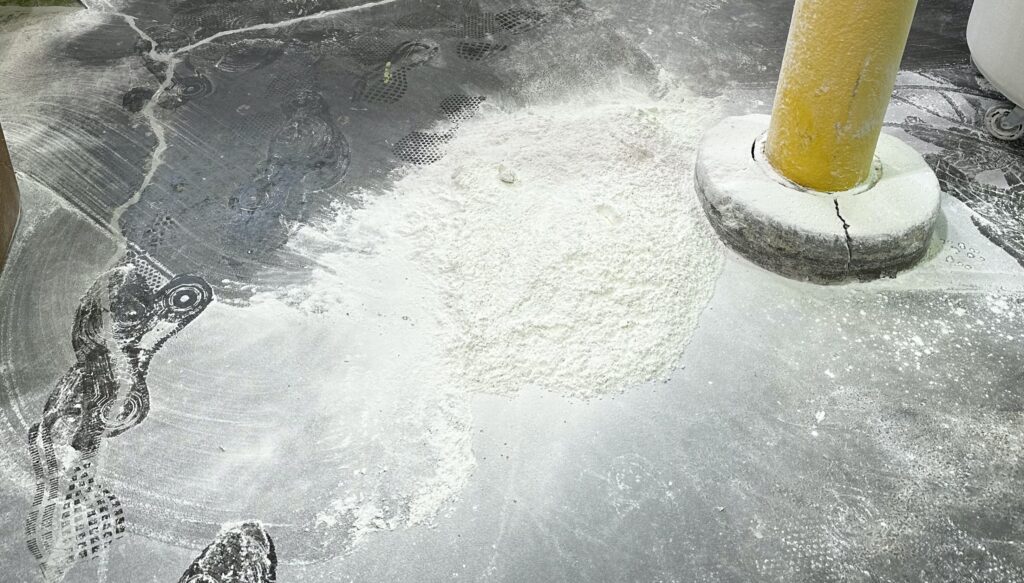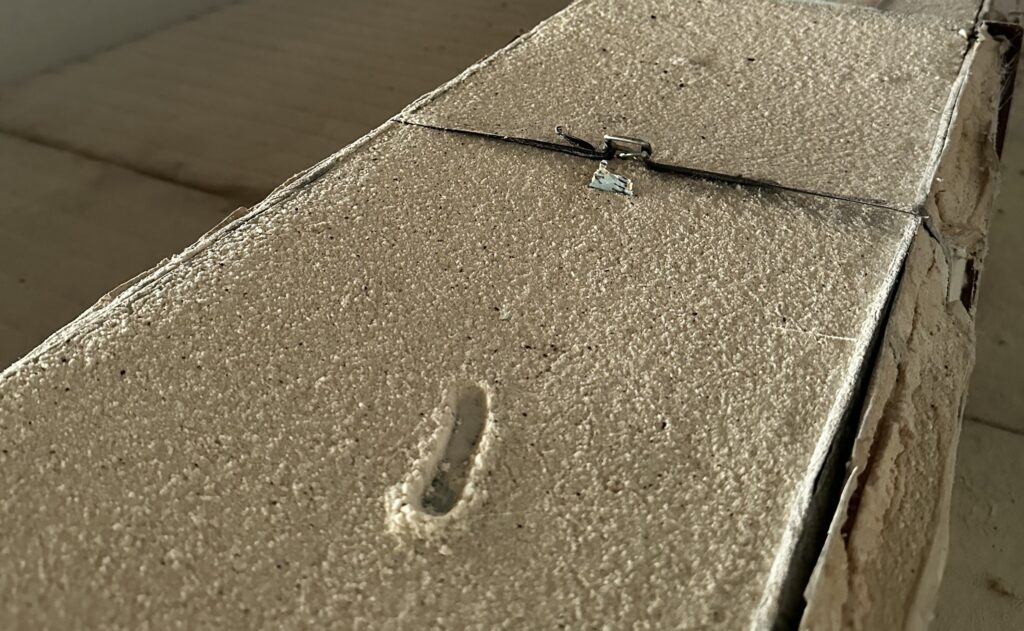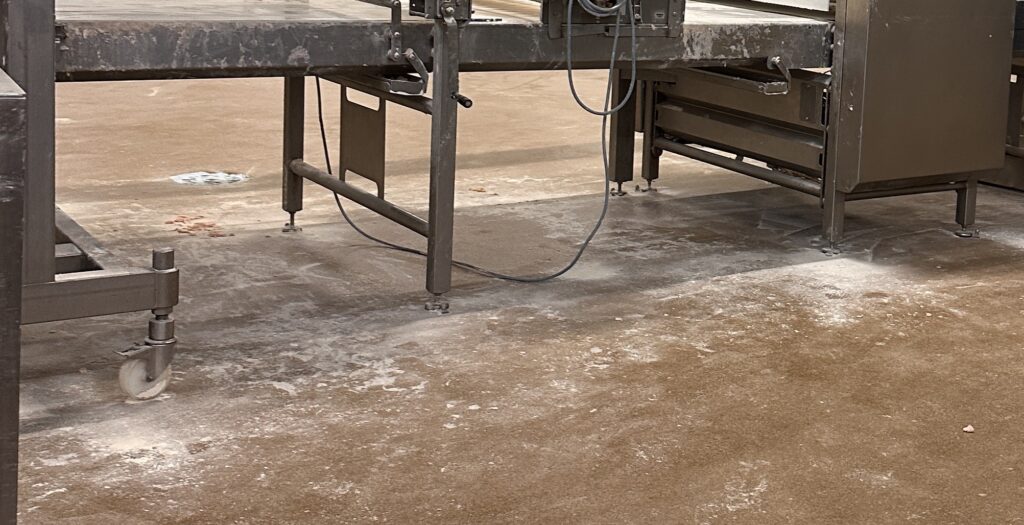Stop Relying on More Calcium Proprionate in Your Formula to Fight Mold

Who’s at fault when bread and baked goods start molding before they should?
If you’re thinking it’s the product developer or the QA department, think again. While product developers, QA, and R&D teams are often on the frontlines when it comes to meeting shelf-life demands, mold prevention in bakery products goes far beyond what can be controlled in the test kitchen. The conditions in a test kitchen often can’t fully replicate the real manufacturing environment, meaning products may appear mold-free for longer in controlled tests than they do once in production. So, who’s responsible? The truth is, it’s a team-wide issue. Everyone has a role to play in keeping mold at bay.
Understanding Mold: Why It’s a Persistent Problem in Bakeries
Mold is a type of microscopic fungi that thrives in moist, warm environments, like bakeries and many food manufacturing facilities. Mold spreads through the release of spores that can travel through the air, on water, or even hitch a ride on insects. While mold is a natural organism, certain strains can release mycotoxins or aflatoxins, which pose a serious health risk. Mold spores can penetrate beyond the surface of baked goods, making it unsafe to simply cut off visible mold from bread or cakes.
As soon as mold spores settle, they start growing, fast. Spores germinate within 24 to 48 hours, and colonies can form within just one to twelve days. Once airborne, mold spores are very difficult to contain, making high-production bakeries without effective dust collection systems an ideal breeding ground. Mold spores readily settle on surfaces, beams, equipment, and even the final products during the cooling process.
3 Conditions Mold Needs to Thrive
In bakeries, the three main factors mold depends on are:
- Water – Flour absorbs water, and humidity levels in bakeries can fluctuate, especially without humidity control systems.
- Food Source – Mold feeds on ingredients commonly found in bakeries, such as flour and sugar, as well as flour dust that can accumulate.
- Temperature – Warm temperatures between 55-70°C are ideal for mold growth.
If these factors are not actively controlled, mold will grow almost as quickly as it lands. This can lead to a constant need to fight mold with preservatives, but adding calcium propionate alone may not solve the root issue if these environmental factors aren’t addressed.

Flour dust left on the floors can be airborne when fans are blowing, resulting in accumulation on horizontal surfaces.
“But We Didn’t Have This Problem Before”
Many bakeries start out as smaller operations with lower production outputs and limited flour dust accumulation. When food production scales up, issues start creeping in. Increased production means longer shifts, more flour bags, more airborne dust, and more cooling time for products, which exposes them to greater mold contamination risks. Without proactive changes in sanitation and dust control, mold becomes increasingly difficult to manage.
Imagine an early-stage bakery where flour dust might settle without much consequence. As the bakery grows, flour dust builds up on beams, shelves, equipment, and filters, creating ideal mold breeding grounds. When mold spores go airborne, say from a blast of air from cooling fans, they have more opportunities to settle on freshly baked goods, especially those that spend extended time cooling. So, the more cooling time the product is given, the more likely it is to collect mold spores from the environment.
Don’t Rely on Preservatives Alone
Simply adding more calcium propionate or other preservatives to your formula may help in the short term, but it’s not a sustainable or health-conscious approach. Overuse of preservatives can affect flavor, texture, and consumer perception of your products. Instead, focus on these preventative strategies to target mold at its source.
1. Limit Airborne Mold Exposure in Cooling and Packaging
Baked goods are sterile when they come out of the oven, as the baking process kills existing mold spores. However, once they start cooling, they’re exposed to the ambient air, which often carries spores. To limit exposure:
- Shorten cooling times: Move products to packaging as soon as they reach the necessary temperature.
- Optimize cooling temperatures: Each product has a different optimal cooling temperature, and controlling this can reduce airborne mold exposure.
- Sterile cooling and packaging areas: Treat these areas with a “clean room” approach to minimize contamination risk. This may involve filtering air, reducing airflow that could disturb settled spores, or isolating these zones from other areas of the bakery.

Fingerprint on flour above a beam. Airborne flour dust accumulates on ceiling beams, creating a food source for mold.
2. Control Flour Dust to Prevent Mold Spread
If airborne flour dust accumulates, mold spores have a consistent food source in every corner of the facility. To control this:
- Install dust collection systems to keep flour from settling on surfaces, especially in mixing areas.
- Keep mixing and cooling areas separate: Airborne flour from mixing zones should not reach cooling areas.
- Regularly clean high-accumulation areas like shelves, tables, stairs, beams, air filters, and unused equipment, where flour dust and mold can quickly build up.
Reducing dust in the air can significantly lower mold contamination rates and reduce the reliance on preservatives.

Unused equipment must be regularly cleaned to prevent flour and cobweb buildup. Resources utilized to maintain sanitary unused equipment may add up over time. Therefore, getting rid of unused equipment would be a cheaper alternative.
3. Eliminate All Sources of Moisture in the Bakery
Mold thrives in moist environments. Avoid creating humid conditions where mold can take hold by:
- Avoiding unnecessary wash-downs. Dry-cleaning methods, such as vacuuming or steaming, can be effective alternatives.
- Fixing any leaks or condensation issues that may introduce water into production areas.
- Drying equipment thoroughly and mop up wet floors if it does need to be washed.
If cleaning and sanitation require regular wash-downs, it’s crucial to ensure that every area is fully dried, particularly any areas prone to standing water. In humid climates, dehumidifiers or moisture control systems may also be necessary.

An increase in changeovers, may limit time for proper sanitation around sheeting equipment.
4. Identify and Address Any Recent Changes
Sometimes, a sudden increase in mold issues can be traced back to recent changes in production. If mold contamination has suddenly become more frequent, ask yourself:
- Have there been changes in shifts or production schedules? More production hours would lead to less sanitation time. This can increase environmental contaminants like flour dust.
- Did ownership or leadership change? New processes or protocols could impact sanitation.
- Has new equipment been introduced? Sometimes, equipment placement or frequency of use affects air circulation or flour dust accumulation.
Dr. Lin Carson may be valuable in helping you identify changes and streamline processes to reduce mold growth.
Think Beyond the Formula: Mold Prevention as a Team Effort
It’s important to remember that while product developers may have the expertise to add preservatives like calcium propionate, it’s the entire team’s responsibility to maintain a mold-free environment. Production, maintenance, and sanitation all play a role in reducing mold contamination, and each has specific actions they can take to ensure high sanitation standards.
Working together, you can create an environment where adding more calcium propionate or other preservatives becomes a last resort rather than a first response. Building out a sustainable mold control strategy will not only improve the quality of your products but also your facility’s efficiency and your team’s satisfaction.
Get Professional Help
A facility-wide approach that includes proper dust management, quick and sterile cooling solutions, and dry, controlled processing environments, can keep mold at bay without overloading products with preservatives. If you’d like more advice on mold control strategies or need help implementing these solutions, contact Dr. Lin Carson. With her expertise, you can build a cleaner, more sustainable bakery and deliver fresher, longer-lasting products without compromising quality or taste.
By investing in these strategies, you’ll not only reduce reliance on preservatives but also build trust with consumers who care about clean, safe, and healthy foods.
Want to stay up-to-date with BAKERpedia? Sign up for our newsletter today!

